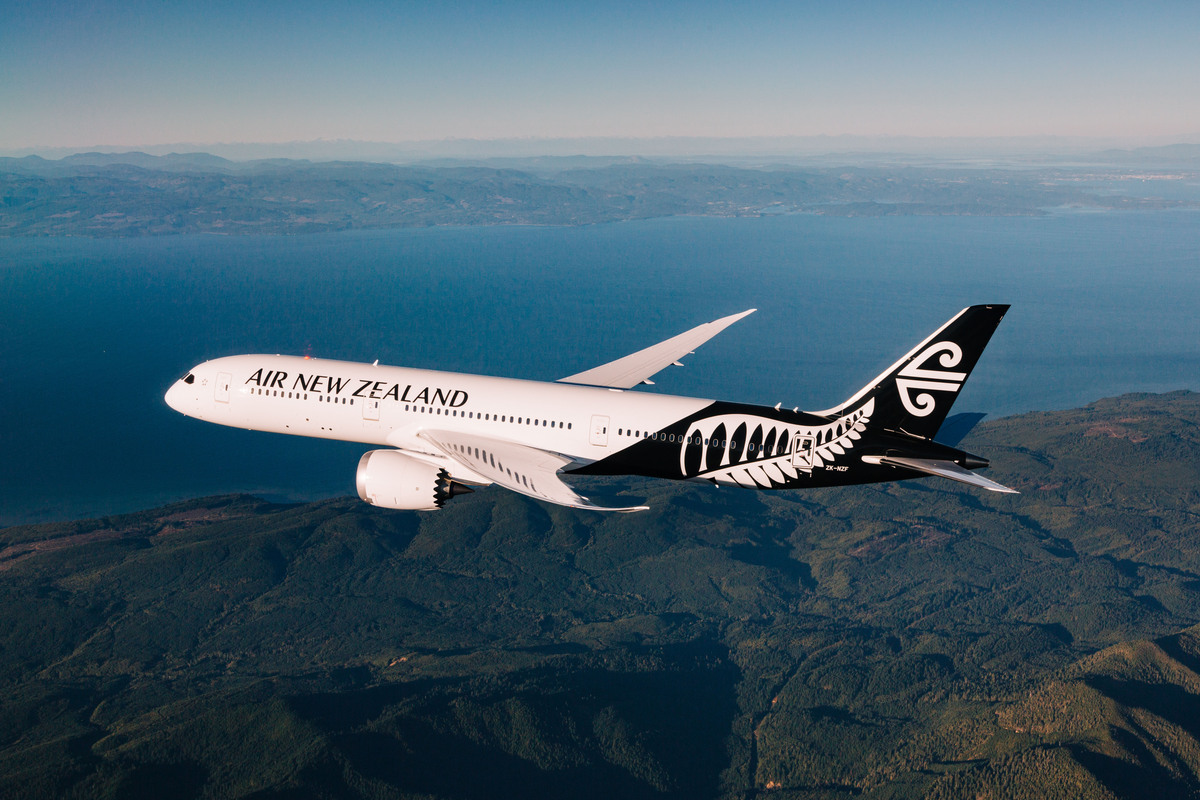Air New Zealand, a flagship carrier and a critical player in global aviation, has announced an expected dip in earnings for the first half of 2025. The primary cause of this projected decline stems from persistent engine issues that have disrupted operations and raised maintenance costs.
This development highlights the challenges facing airlines in balancing operational efficiency, profitability, and customer satisfaction. This article explores the specifics of Air New Zealand’s announcement, the impact of engine issues on the airline’s performance, and the broader implications for the aviation industry.
The Earnings Forecast
In a recent update to shareholders, Air New Zealand disclosed its revised earnings outlook for the first half of 2025. The airline expects a noticeable decline in profits compared to previous forecasts, largely attributed to ongoing engine troubles affecting its fleet of Boeing 787 Dreamliners.
Factors Driving the Forecast
- Engine Reliability Issues: The airline has faced recurring challenges with the Rolls-Royce Trent 1000 engines powering its Dreamliners. These problems have resulted in increased maintenance costs and unplanned downtime.
- Reduced Flight Capacity: To address these issues, Air New Zealand has been forced to ground several aircraft, leading to reduced flight schedules and lost revenue opportunities.
- Increased Operating Costs: Beyond maintenance expenses, the airline has incurred additional costs for leasing replacement aircraft and compensating passengers affected by delays and cancellations.
The Engine Issue: A Persistent Problem
Air New Zealand’s troubles with the Trent 1000 engines are not new. These engines, manufactured by Rolls-Royce, have been plagued by durability and performance issues since their introduction.
Technical Challenges
- Blade Cracking: The Trent 1000 engines have suffered from premature wear and cracking in turbine blades, requiring frequent inspections and part replacements.
- Compressor Problems: Issues with the intermediate pressure compressors have further compounded reliability concerns, leading to stricter regulatory scrutiny.
- Global Impact: Air New Zealand is not alone in facing these problems. Airlines worldwide using Trent 1000 engines have reported similar issues, straining Rolls-Royce’s capacity to provide timely repairs and replacements.
Impact on Air New Zealand
For an airline with a relatively small but highly utilized fleet, these engine issues have had an outsized impact. The need to ground multiple aircraft has disrupted the airline’s operational efficiency and affected customer experience.
Financial Implications
The persistent engine problems have led to significant financial repercussions for Air New Zealand.
Increased Maintenance Costs
Maintaining the affected engines has required substantial investment. Spare parts, labor, and unplanned repairs have driven up maintenance expenses, eroding profit margins.
Lost Revenue
The grounding of aircraft has resulted in a reduction in available seat capacity, directly impacting ticket sales and revenue from ancillary services such as cargo and onboard offerings.
Lease and Charter Costs
To mitigate the impact of grounded aircraft, Air New Zealand has leased replacement planes and chartered flights. These measures, while necessary to maintain service levels, have added to the airline’s financial burden.
Customer Compensation
Disrupted schedules have forced the airline to compensate passengers through refunds, rebooking, and other goodwill measures. These expenses further strain the company’s financial health.
Operational Adjustments
Air New Zealand has implemented several strategies to address the operational disruptions caused by engine issues.
Fleet Management
- Revised Flight Schedules: The airline has optimized its schedules to maximize the use of available aircraft, prioritizing high-demand routes and reducing frequencies on less profitable ones.
- Diversification of Fleet: Air New Zealand is exploring options to diversify its fleet, potentially adding aircraft from other manufacturers to reduce reliance on the Trent 1000 engines.
Collaboration with Rolls-Royce
The airline is working closely with Rolls-Royce to expedite repairs and replacements. However, the global demand for engine parts and services has resulted in delays, prolonging the resolution of these issues.
Customer Communication
Maintaining transparent communication with passengers has been a priority. The airline has kept customers informed about schedule changes and provided alternatives to minimize inconvenience.
Broader Implications for the Aviation Industry
The challenges faced by Air New Zealand reflect broader trends and issues within the global aviation industry.
Dependence on Suppliers
Airlines rely heavily on a small number of engine manufacturers, creating vulnerabilities when technical issues arise. Diversifying suppliers and developing more robust contingency plans could mitigate such risks.
Cost Pressures
As airlines grapple with rising fuel prices, labor costs, and maintenance expenses, issues like engine reliability can have a disproportionate impact on profitability.
Reputation and Customer Loyalty
Operational disruptions, even when caused by factors beyond an airline’s control, can damage customer trust. Ensuring a seamless experience despite challenges is critical to maintaining loyalty.
Innovation in Aircraft Technology
The Trent 1000 issues underscore the need for continuous innovation in aircraft and engine technology. Developing more reliable and durable systems is essential to meet the demands of modern aviation.
Future Outlook for Air New Zealand
While the first half of 2025 looks challenging, Air New Zealand remains committed to overcoming these hurdles and returning to a growth trajectory.
Investment in Fleet Renewal
The airline is evaluating its long-term fleet strategy, with a focus on acquiring more reliable and fuel-efficient aircraft. This includes exploring options from alternative engine manufacturers.
Operational Resilience
Enhancing operational resilience is a priority. This includes investing in predictive maintenance technologies, improving supply chain management, and developing contingency plans for unforeseen disruptions.
Customer-Centric Initiatives
Air New Zealand continues to prioritize customer satisfaction, investing in service enhancements and loyalty programs to retain its customer base.
Sustainability Goals
Despite current challenges, the airline remains committed to its sustainability targets, including reducing emissions and exploring alternative fuels. A modernized fleet will play a key role in achieving these objectives.
Conclusion
Air New Zealand’s announcement of lower earnings for the first half of 2025 highlights the complex challenges facing the airline industry. Persistent engine issues with the Trent 1000 have disrupted operations, increased costs, and strained profitability.
However, the airline’s proactive measures, including collaboration with Rolls-Royce, strategic fleet management, and customer-focused initiatives, demonstrate its commitment to overcoming these challenges.
While the short-term outlook remains uncertain, Air New Zealand’s resilience and adaptability position it to navigate this turbulent period and emerge stronger in the long term. The lessons learned from this experience will not only benefit the airline but also contribute to advancements in aviation technology and operations globally.



